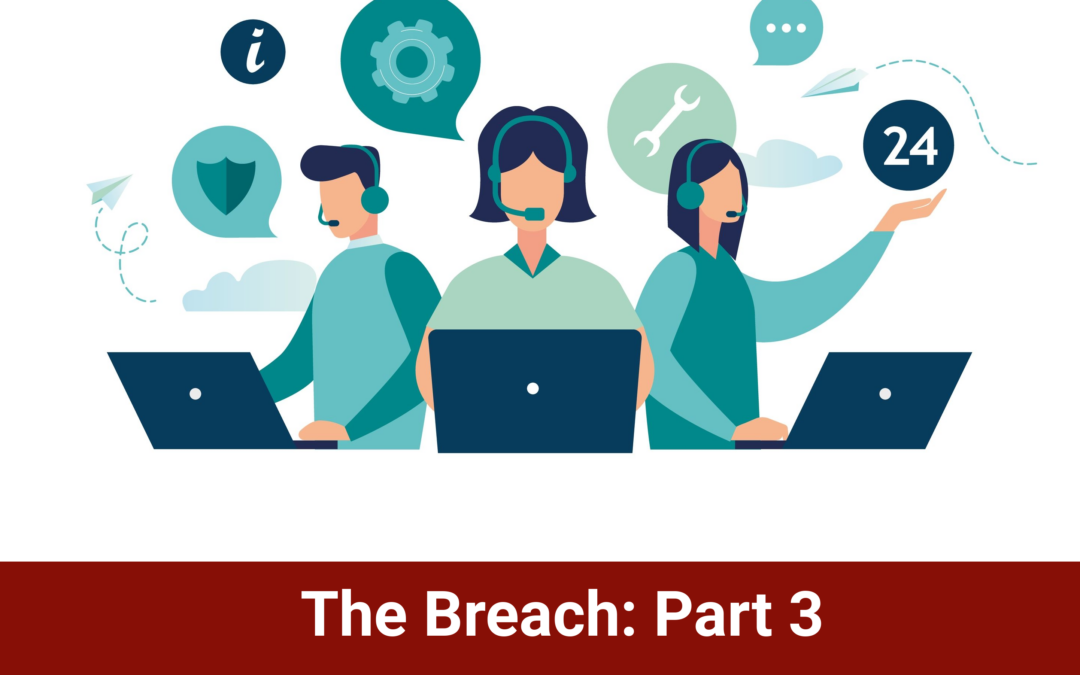The Breach – Part 3
In “The Breach – Part I” and “The Breach – Part 2”, Black Bottle IT shares a true story of cybercrime that took place with a manufacturing client and how it unfolded.
“The Breach” continues…
Engaging the Data Breach Coach
It turns out; Data Breach Coaches are law firms that specialize in cyber statutes. It finally felt good to be talking to someone who I thought would guide us through our options. Their role, as it was explained to me, was to quarterback the breach response. They would:
- Take the lead and run point
- Advise our team on what to do next
- Bring in third-party expertise, if necessary, to help us mitigate any legal risk.
This information all sounded great. My first question was, “Where do we start?”
A formal engagement letter was emailed to me shortly after our call ended. I read it and found some language I didn’t like, as with most legal documents. Most things I could live with, except the clause that says, “Data Breach Coach, acting in the best interest of the client, can engage and agree to terms with third party services, with all financial responsibility passed on the client, without client consent.” It says the law firm can spend company money without anyone consenting or agreeing. The second call we would have was to review the engagement letter. When I questioned this language, “only to be told,” the response was, “It’s standard language, for your own good so that we can move quickly.” I had this line removed from the agreement and officially engaged the Data Breach Coach.
Forensic Swat Team
One of the first things the Data Breach Coach advised was to engage a third-party computer forensic company to determine what data was lost when it was lost, etc. We had a call, and the person leading the conversation had a super high sense of urgency. He wanted to send 2-3 forensics technicians on-site the next day. I paused and said, “How much is that going to cost?”
Our insurance coverage was up to 250K of expenses. Anything over was coming from the company coffers. We were a small company; having thousands of dollars in fees would put the company in a vulnerable financial state. So, I was always trying to walk the line of protecting the company, doing our duty to investigate, and being very mindful of the financial situation.
Back to the story – The forensics company said we didn’t have time to wait, which was the best option. I countered with, can’t we gather information with our staff and send you what you need? Let’s start there, make a list, and we’ll begin compiling.
Date of Discovery
All along the way, third-party companies were lining up with their bags wide open, hoping to get them filled with “incident response” money. Most of them were trying to create some real sense of urgency to engage and take action. I never fell for the high-pressure tactics; I wanted to get some options, evaluate the risks, and make an informed decision. However, in the days that followed, the attorneys started educating us in cyber statutes’ generalities. Most of them had a requirement to respond with their timelines after the “date of discovery.” This timeframe was the only timeline that mattered. We had time to rationally engage third-party forensics to identify the scope of the data breach to formulate a responsible response plan.
About the Author:
This blog was written by John Hensberger, Managing Partner of Black Bottle IT. Earlier in his career, John was also part of a company that experienced a cybersecurity breach. That experience fueled his passion for assisting other companies with their cybersecurity needs to mitigate their risk. As Technology Executive and Cybersecurity Advisor, John was recognized as the Pittsburgh CIO of the Year, 2014. Connect with John here.

